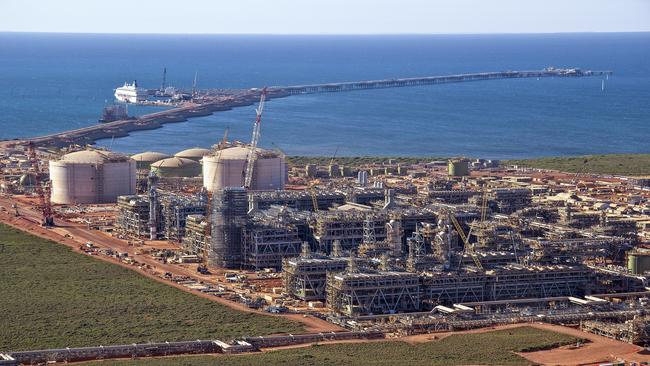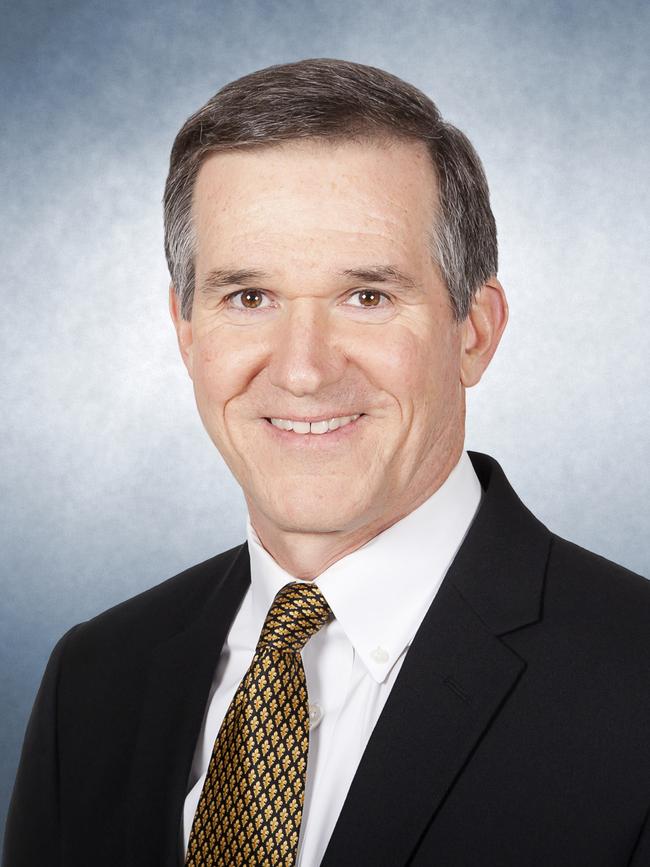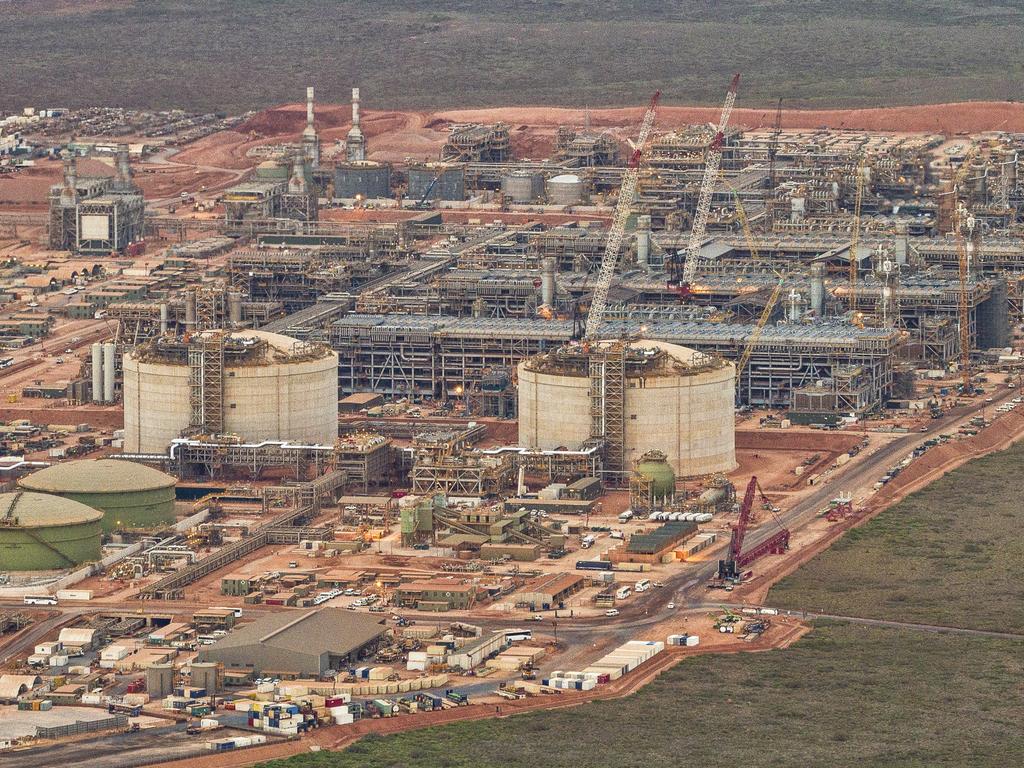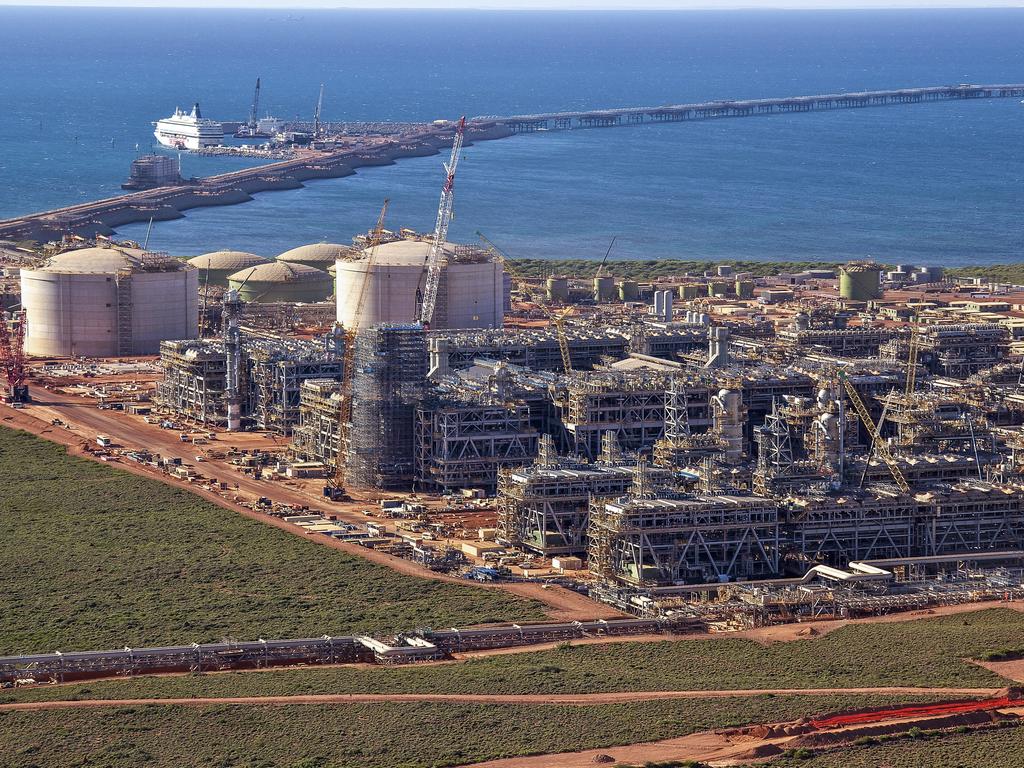Chevron misses carbon target on giant Gorgon plant
Chevron won’t meet a target for burying carbon from its giant Gorgon LNG project in Western Australia.

Energy giant Chevron has failed to meet a five-year target burying enough carbon for its $US54bn ($73bn) Gorgon LNG project, prompting the WA government to demand a meeting over how it will fill the shortfall.
The $2.5bn Gorgon carbon capture and storage project under WA’s Barrow Island is the biggest facility in the world but was hit by technical setbacks and delays, underlining the task ahead for oil and gas producers pinning their hopes the nascent technology can help solve pollution concerns.
Chevron and its partners were required to capture and store at least 80 per cent of Gorgon’s carbon emissions every five years under a target set by the state’s environment watchdog. The system works by reinjecting carbon dioxide into rocks more than 2km beneath Barrow Island after being stripped out from the industrial gas gathering process.
The first five-year period ended on July 18 after WA’s Environmental Protection Authority decided Gorgon had officially been in production since July 2016 – when it received its first operations licence – despite Chevron arguing it reached routine production two years later.
Chevron’s new Australian boss said while the system had now injected five million tonnes of carbon underground, it had fallen well short of the target amid persistent technical issues.
“We’re working with the WA regulator on how we make up for the shortfall and we’ll report publicly on that later in the year,” Chevron Australia’s managing director Mark Hatfield told The Australian.
“Like any pioneering endeavour, it takes time to optimise a new system to ensure it performs reliably over 40-plus years of operation.”
A meeting now looms with WA Environment Minister Amber-Jade Sanderson over how to handle the issue, with Chevron potentially facing a $100m-plus bill should it be forced to buy carbon credits to offset its emissions shortfall or if it can’t negotiate a new target with the government.

“The minister has called Chevron in for a meeting to discuss her concerns and to seek an explanation of how the company intends to address the issue,” Ms Sanderson’s spokeswoman said.
The company expects to inject about 100 million tonnes of carbon dioxide underground over the life of the project with the system to eventually capture four million tonnes of greenhouse gases a year.
“The road hasn’t always been the smoothest, but the challenges we’ve faced – and overcome – will make it easier for those who aspire to reduce their emissions through carbon capture and storage,” Mr Hatfield said.
Chevron was responsible for just over 10 million tonnes of carbon dioxide emissions in 2019-20, making it the eighth-biggest emitter in the country, according to the Clean Energy Regulator.
Energy Minister Angus Taylor has named carbon capture and storage as one of Australia’s five “priority technologies” in tackling emissions but few projects currently exist despite government support.
Santos will consider giving the go-ahead for its Moomba “carbon sink” in South Australia this year.
The EPA target for Gorgon effectively added three more years of carbon commitments for Chevron and its partners, which could force them to pay costly offsets if it can’t achieve that 80 per cent carbon capture requirement.
The EPA has a chequered history with the Gorgon project, which sits on the Barrow Island Class-A nature reserve off WA’s northwest coast. It originally recommended the project should not go ahead, noting it would be “environmentally unacceptable” if it did not include a scheme to inject a high percentage of the project’s carbon dioxide.
Gorgon is 47 per cent owned by Chevron, while ExxonMobil and Shell each have a 25 per cent stake. The plant was forced to cut production in 2020 after cracks were found during maintenance.





To join the conversation, please log in. Don't have an account? Register
Join the conversation, you are commenting as Logout